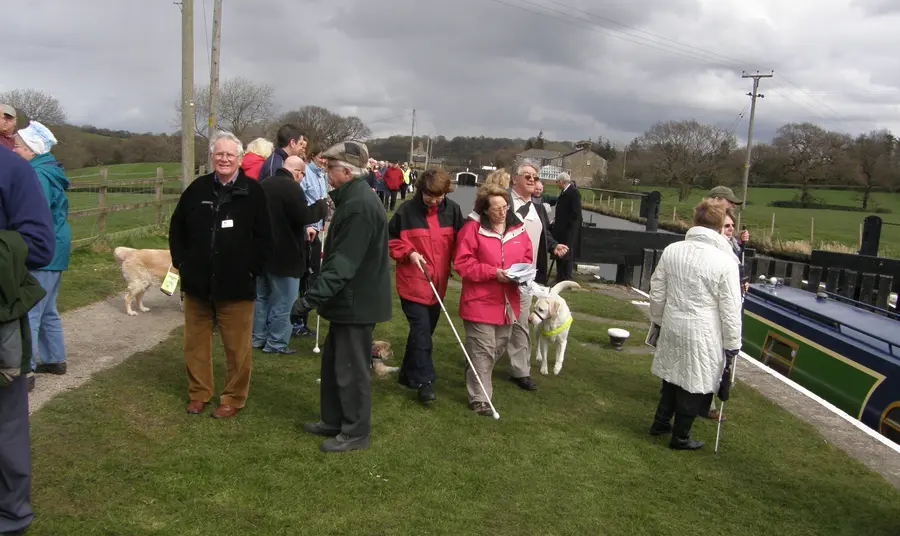
Awards for All
The Leeds and Liverpool Canal Society (LLCS) is a charity that works to promote awareness and ensure the survival of the traditions of the longest canal in Britain. The canal links the port of Liverpool with the Aire and Calder Navigation at Leeds, providing a route between the Irish Sea and the North Sea. It played a key part in the industrial and commercial history of the north of England from the late 18th-century.
LLCS worked in partnership with Galloway’s Society for the Blind and with the support of British Waterways to produce heritage walks along the canal for visually impaired people. Local volunteers were trained to develop the walks and to provide a guiding service. They also developed tactile interpretation panels. Both the walks and panels were designed in collaboration with, and tested by, people with visual impairments.
The walks were produced in audio format to be downloaded from the Galloway’s Society for the Blind’s website for use on MP3 players. Text versions were produced for sighted guides. The walks offer information on the history of the canal, and guidance on what to listen out for and touch during the walks.
This community-led initiative succeeded in providing access to the heritage of the canal to people who are traditionally excluded from participation because of disability. The volunteers developed valuable heritage skills through researching the walks and producing the panels. They also increased their understanding of the needs of visually impaired people and how they can be best supported to engage with their heritage.